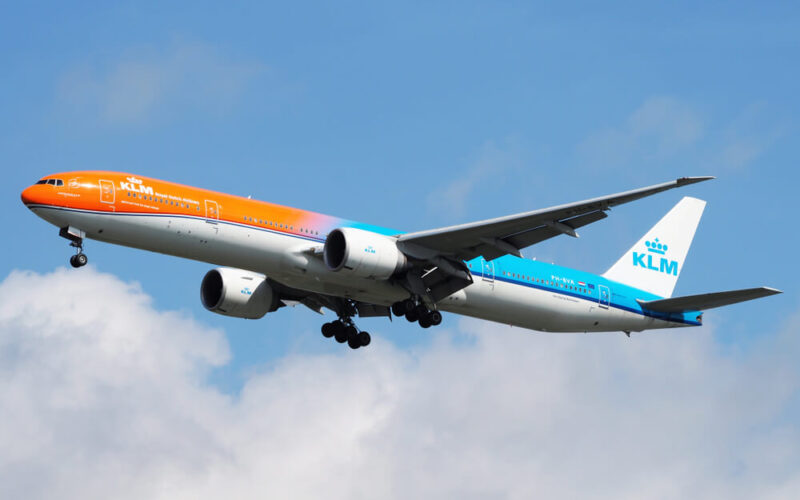KLM Royal Dutch Airlines have announced that the airline has ordered two additional Boeing 777-300ER models to boost its long-haul fleet. The -300ER program, launched together with the -200ER on February 29, 2000, became the most successful wide-body aircraft program in Boeing’s history. So far, the Chicago-based manufacturer has delivered 809 Boeing 777-300ER aircraft.
Currently, the Dutch airline operates 29 Triple-Sevens, 14 of them are the -300ER version. But with the 777X entering its last stages of development, as Boeing prepares to begin flight tests after GE fixes issues with the GE9X engine, why would KLM opt for the older brother of 777X, the 777-300ER? What about the Boeing 787 Dreamliner, which is even more efficient or the Airbus A350, another composite aircraft?
Fleet overhaul
For the past few years, KLM, together with its group partner, Air France, have been overhauling their fleet. In KLM’s annual report for 2018, the airline has highlighted that it aims to reduce its “CO2 emissions per passenger by 20 percent in 2020 compared to 2011”. One way to do so is to introduce new, much more efficient aircraft. KLM has been recently retiring its older Boeing 747-400, some of which are approaching the 30-year-old mark. The Queens will be replaced by new aircraft, as the airline plans to retire its last 747 in 2021.
Initially, the Airbus A350 was destined to replace the last departing Boeing 747, but an announcement by Air France-KLM group on June 28, 2019, changed the plans. Instead of seven new Airbus A350 aircraft, KLM will receive six Boeing 787 aircraft – while Air France will receive the A350, which were destined to go to Amsterdam. This comes as the two airlines aim to reduce their costs by homogenizing their fleets and, as a result, rules out the A350 for KLM.
What about the Dreamliner, if KLM already operates the type and has several aircraft on order? If KLM intends to replace the Boeing 747-400 and reduce its emissions by 2021, the 787 is not a great option. While the six aircraft will help KLM expand operations, it will not help the airline to renew its fleet. Currently, Boeing has a backlog consisting of 555 Boeing 787 as of June 30, 2019. Just recently, Vietnam Airlines received its first 787-10 from Air Lease Corporation – the leasing company ordered ten Dreamliners, powered with GEnx engines, in September 2013. Such a queue would put a huge delay in the Dutch airlines‘ fleet renewal plans, thus the Dreamliner is also ruled out. In addition, the 787-10 has a smaller cabin than the 777-300ER, which would reduce KLM‘s capacity compared to the Boeing 747.
So, with the 777X still in development and a backlog of 344 orders, this leaves KLM with the only option – Boeing 777-300ER. The press release stated that KLM‘s order of the two Triple Sevens was named to “an unidentified customer on Boeing’s Orders & Deliveries website” – looking at the website, the most recent order of two 777-300ER by an unidentified customer dates July 26, 2019. According to Boeing, the manufacturer has a backlog of 82 various type 777 aircraft, including the -200ER, -300ER and the 777F. With a production rate of five per month, KLM can expect their newest order to be delivered by Boeing in late 2020-early 2021, staying perfectly in line with their plan to renew the fleet.
Also, KLM configures both 777-300ER and 747-400 to seat a maximum of 408 passengers, so the airline could deploy the newest Triple Sevens on the same routes without sacrificing any capacity. For Boeing, this means that it can continue running the production until the 777X program ramps up after General Electric fixes the issues with the GE9X engines. Boeing plans to deliver the first 777X to Emirates in 2020, which would coincide with the final deliveries of the 777. Following the newest KLM order, no airline is expected to order the 777-300ER or the 777F – Boeing will want to move on to the 777X production, while freighter production is occupied by the 767F, which has a bigger backlog of orders (99 aircraft) and Boeing will increase the monthly rate from 2.5 to three 767F in 2020.

